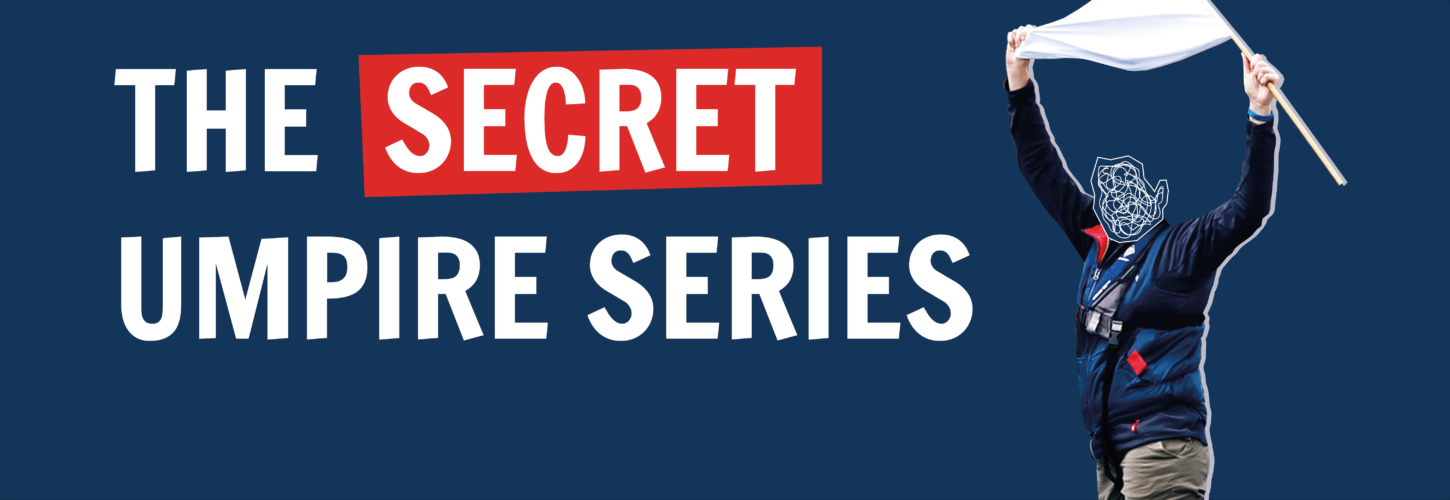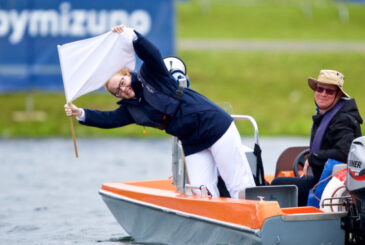This is the first of a series of articles on the application of the Rules of Racing and their significance to the rowing community. They have all been written by experienced umpires.
Picture this scenario: you are rowing in an eights race and winning by clear water. It’s great seeing your opposition right behind you! The umpire in the launch following the race keeps calling the name of your club and pointing her flag to her right, but you can’t hear what she is saying. Your cox says nothing apart from encouraging you to keep pulling, which you do.
You win the race by two lengths and are looking forward to the final when the umpire brings up their launch and tells you that you are disqualified for “repeated interference”.
But I didn’t interfere with anybody, did I? Confused?
This happened to me in the dim and distant past and – possibly for some deep psychological reason related to this experience – I chose to take up umpiring when my competitive racing career ended.
I didn’t interfere with anybody, did I?
So, safety and fairness.
Why this title? The explanation lies in the fact that these are the two primary principles of umpiring, in that order, throughout the world. Umpires should not be seen as the ‘rowing police’. Rather, they are there to ensure that racing is safe and fair in all formats.
Many of you will be aware of safety boats and crews at competitions and indeed these cannot be held without them.
In many types of racing, however, the umpire is the first line of safety – often the first responder – and the first to alert others to an incident. Boat racing is an outdoor one that takes place on rivers, lakes, or seas, and so subject to the inherent dangers of any water sport. Boats move at a variety of speeds, with different methods of steering, and a spectrum of competency. All of these form potential risks which need to be mitigated and monitored to allow safe racing.
Wherever possible, we want the fastest crew to win in fair and equal conditions
The British Rowing Rules of Racing and RowSafe forms the guidance on safety in training and competition and is often formatted on the basis of experience. It is this that also guides umpires in their duties.
Once safety is established and closely monitored, we aim to maintain fairness. This word can be interpreted in many ways by different individuals, but the Rules of Racing are written to inform how the umpiring community is trying to achieve this. They are reviewed and updated every year by a panel reporting to the national competition committee to keep abreast of current ideas and changes in our sport. Wherever possible, we want the fastest crew to win in fair and equal conditions.
Forthcoming articles will expand on certain key rules and explain the thinking behind them and their application. It is hoped that as many competitors and coaches as possible will read them and feed back questions that may be answered in future editions.
Back to why my crew didn’t make that final. My crew was disqualified for not being on our correct course in the umpire’s judgement and not responding to his instructions to move to our bow side. We were most likely causing the following crew, who were on their correct course, to have to row in our puddles and thus were gaining an unfair advantage. One fewer pot in my trophy cabinet, alas!
Next Secret Umpire article: The interference rule >>
Find out more about umpiring
Have you considered umpiring?
We are always looking for new recruits to replace those who step down. You can still umpire and race/coach at the same time, as many of our community still do. The minimum requirement is just three separate days and 12 hours per year.
If you are interested, then please contact the National Umpiring Committee. We will then direct you to your regional umpiring committee for training.
You will be warmly welcomed!










